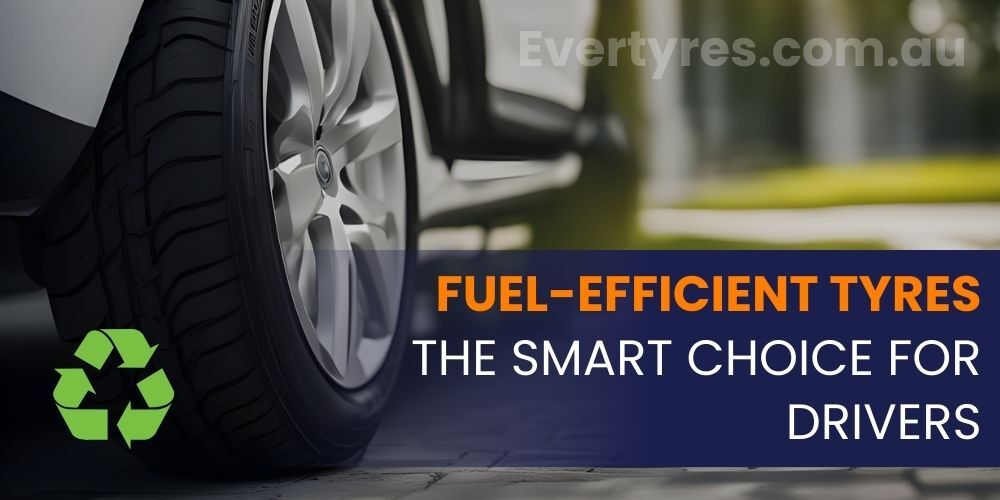
In today's fast-paced world, where every dollar counts, the importance of fuel efficiency cannot be overstated. Rising fuel prices, coupled with growing environmental concerns, have put fuel consumption under the microscope. The good news is that there are steps you can take to curb your fuel costs, and it all starts with your choice of tyres.
Introduction:
Imagine a world where your car sips fuel instead of guzzling it, where each mile is kinder to your wallet and the environment. Fuel efficiency is not just about saving money; it's also about reducing your carbon footprint. The Environmental Protection Agency (EPA) estimates that every litre of gasoline burned emits about 2.3 kg of carbon dioxide (CO2) into the atmosphere. By choosing fuel-efficient tyres and adopting fuel-efficient driving habits, you can make a significant contribution to reducing these emissions.
I. The Fuel Efficiency Equation
Fuel efficiency is a delicate equation, and tyres are a crucial variable in this equation. Inefficient tyres can reduce your fuel efficiency by up to 3%, which translates to spending extra on fuel annually. To put this in perspective, for the average driver in Australia, this could mean an additional expenditure of AUD 50 to AUD 100 on fuel each year.
II. Tyre Selection Matters
Fuel-efficient tyres are specifically designed to minimize rolling resistance. Rolling resistance is the force that opposes the motion of your tyres as they roll along the road. High rolling resistance requires more energy, which means your engine has to work harder, leading to increased fuel consumption. By choosing the right tyres, you can reduce this resistance and ensure your car operates more efficiently.
III. Understanding Fuel-Efficient Tyres
Not all tyres are created equal. Fuel-efficient tyres achieve their magic through innovative designs and materials, such as silica-based tread compounds and unique tread patterns that minimize energy loss. These tyres are meticulously engineered to provide a smoother ride, reduced rolling resistance, and enhanced fuel efficiency. Understanding the science behind them can help you make informed choices when purchasing tyres.
IV. Tyre Pressure and Fuel Economy
Proper tyre pressure might seem like a minor detail, but it's a critical factor in your vehicle's fuel economy. Under-inflated tyres can reduce fuel efficiency by up to 3%. For the average driver, this means that maintaining the correct tyre pressure could translate to annual savings of AUD 50 to AUD 100 on fuel costs. This seemingly small adjustment can have a significant impact on your wallet.
V. Tyre Tread and Fuel Efficiency
Worn-out tyre treads can increase rolling resistance, leading to decreased fuel efficiency. In fact, tyres with low tread depth can reduce fuel economy by up to 15%. This not only affects your pocket but also poses safety risks, especially in wet or slippery conditions. Ensuring your tyres have adequate tread depth is not only a matter of cost savings but also a matter of safety.
VI. Tyre Size and Fuel Consumption
Tyre size isn't just a matter of aesthetics; it can significantly influence fuel efficiency. Larger tyres have more rolling resistance due to their increased surface area in contact with the road. This can result in a fuel efficiency reduction of 2-5%. Smaller tyres, on the other hand, typically offer better fuel economy. Choosing the right size is a balance between personal preferences, performance requirements, and the desire to maximize fuel efficiency.
VII. Tyre Maintenance for Fuel Savings
Proper tyre maintenance and checkups is the key to preserving fuel efficiency. Simple maintenance tasks, such as regular tyre rotations and wheel alignments, can help ensure even wear on your tyres. By following a checklist for tyre care and maintenance, you can extend the lifespan of your tyres and maintain optimal fuel efficiency. These measures not only save you money but also contribute to a greener planet by reducing waste.
VIII. Driving Habits for Fuel Efficiency
Your driving habits play a crucial role in fuel consumption. Aggressive driving, including rapid acceleration and sudden braking, can lower fuel efficiency by up to 33% on the highway and 5% in the city. By adopting a smoother driving style and avoiding excessive speed, you can significantly reduce your fuel consumption. These changes not only benefit your wallet but also promote safer driving practices.
IX. Environmental Impact
The reduction in fuel consumption achieved by using fuel-efficient tyres can translate to fewer carbon emissions. For example, if all drivers in Australia switched to fuel-efficient tyres, it could potentially save over 1 billion litres of fuel annually, reducing CO2 emissions by millions of metric tons. Choosing fuel efficiency isn't just about personal savings; it's also about contributing to a cleaner and healthier environment for all.
Conclusion
Selecting the right tyres and embracing fuel-efficient driving practices can substantially reduce your fuel expenses while contributing to a more environmentally sustainable future. Prioritizing fuel efficiency not only puts money back in your pocket but also lessens your carbon footprint. So, when it comes to tyres, remember, it's more than just the rubber meeting the road—it's about making every kilometre count. Choose to drive with tyres from Evertyres, and experience these benefits firsthand while also making a positive impact on the world around you.


